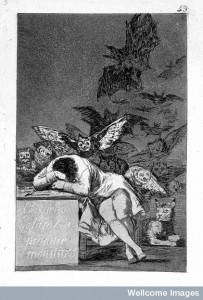By Lisa Smith, W&M Contributor
Vampires were the flavour of the month, with two very different types of vampires on show: the staked skeletons of an archaeological discovery and the sexy beasts starring in a new season of a certain TV programme.
The division of these two types can be traced to the eighteenth century. The Ottoman Empire and Kingdom of Austria signed the Treat of Passarowitz in 1718, extending Austrian control into modern-day Romania and Serbia. Strange stories came from the borderlands: corpses resurrecting and causing other people to die suddenly. The Western public eagerly devoured the tales of the exotic East.
Folkloric belief in vampires never really caught on in the West, instead appearing primarily in literature (eg. Heinrich August Ossenfelder’s poem, “The Vampire”, 1748). The western tradition of revenants and blood-suckers referred to ghosts, witches, and unpopular political figures; western folklore had no room for the soulless walking corpses, but vampires would add an erotic frisson in gothic horror.
From the outset, the “Credibility of Vampyres” was unlikely in Western Europe, given the growing cultural tension between reason and imagination, natural explanations and superstition. The mark of an educated man was to find rational, natural explanations for observed phenomena, by contrast to the continued reliance on supernatural explanations attributed to the lower classes, foreigners, and women (thought to be prone to flights of fancy). The Gentleman’s Magazine (vol. II, May 1732) insisted that it was impossible for dead bodies to behave this way and atributing it to the Devil would only “superinduce new Impossibilities”. The conclusion? “We must disbelieve it, or renounce our Reason.”
Epidemics, however, were an ongoing concern. Medical men and civic authorities monitored patterns in the hopes of being able to prevent epidemics. It is within this context that Augustin Calmet, Benedictine monk and biblical scholar, collected accounts of supernatural events in his Dissertations sur les apparitions, des anges, des démons et des esprits, et sur les revenants et vampires de Hongrie, de Boheme, de Moravie et de Silésie (Paris, 1746; English translation, 1759).
The concern that emerges was the possibility of a new (to the west) contagious disease, or worse yet, an epidemic of excess imagination. Dutch newspaper The Gleaner reported in 1733 that the problem was a “disturbed imagination” amongst the “ignorant and credulous”, caused by a poor diet that made their blood heavy. The “poison” could then be transmitted to others just like rabies. More likely, Calmet suggested, was the direct action of imagination on individual bodies. As physicians knew, people could be tricked into seeing and hearing what was not there—and extreme fear could kill.
In a section on ‘epidemical fanaticism’, Calmet referred to epidemics in which physicians saw fear as causing more problems than the disease. This, then, seemed to the main threat: imagination was always potentially dangerous, but imagining vampires could be fatal. A problem that modern vampire fans might want to keep in mind…
Lisa Smith is an Associate Professor of History at the University of Saskatchewan. She writes on gender, family, and health care in England and France (ca. 1600-1800) and recently taught a course on natural and supernatural worlds in early modern Europe.

